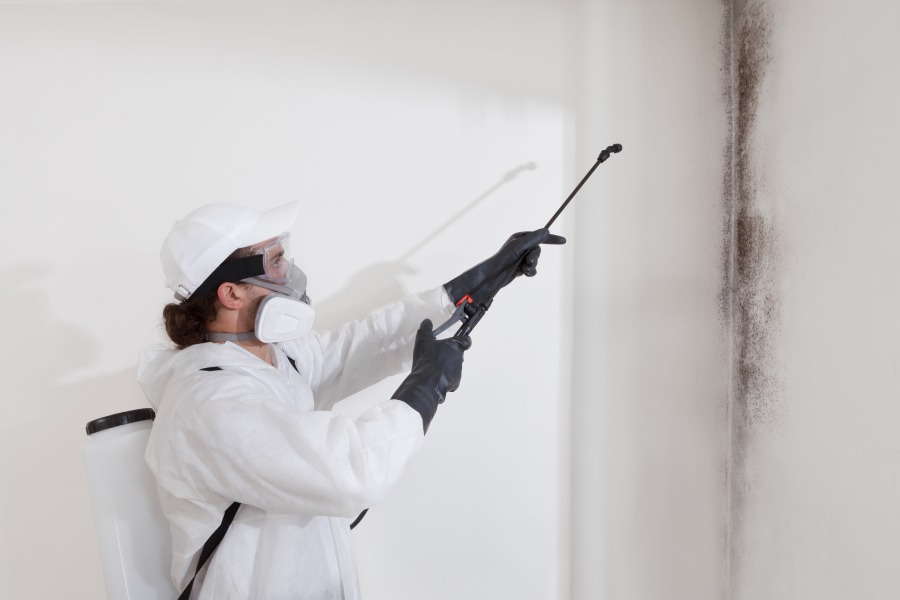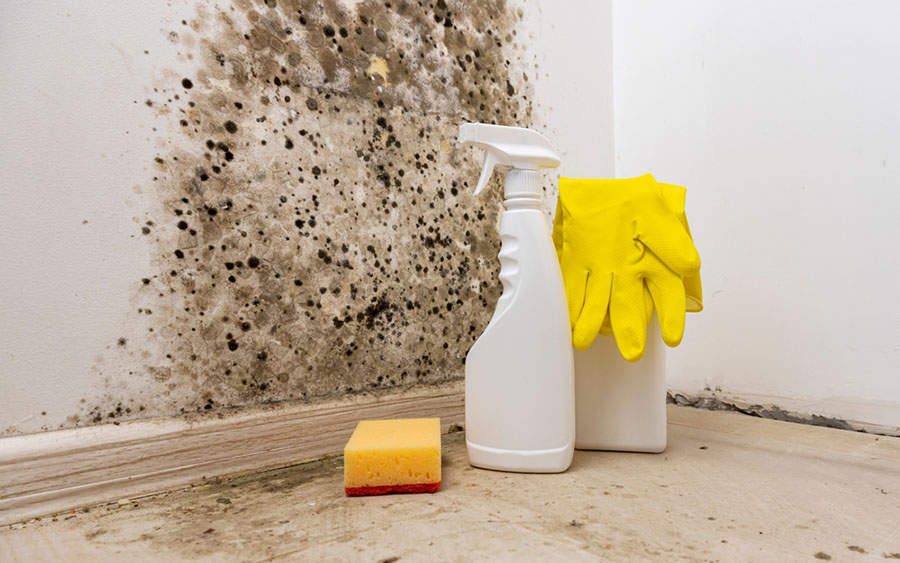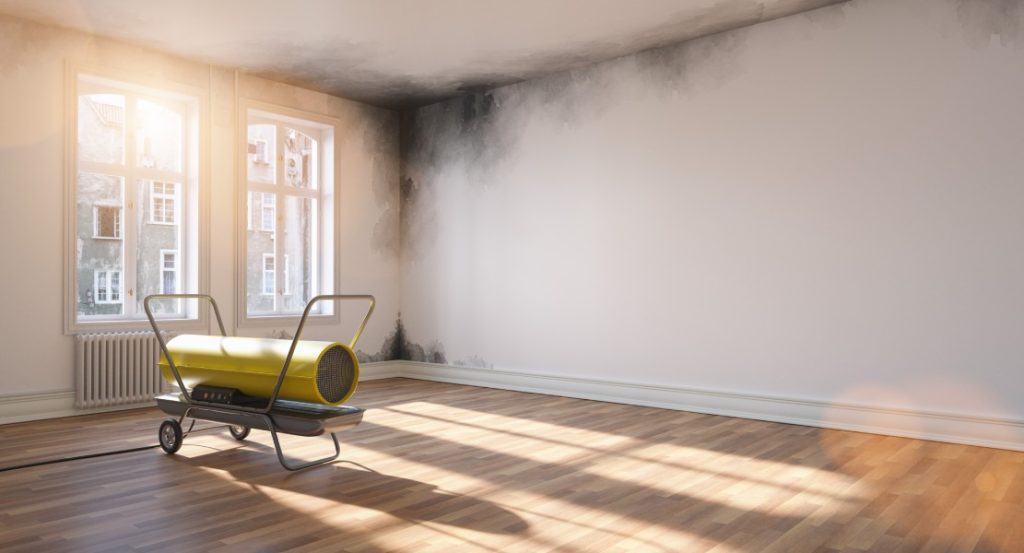Discovering mold in your home can be a distressing experience, raising concerns about health risks and property damage. As homeowners grapple with this unwelcome intruder, many of them look for its remediation. But how long does mold remediation take?
While necessary, mold remediation can disrupt daily life and leave residents wondering when they can return to normalcy. The infestation’s extent, mold type, and affected materials all influence the restoration timeline.
In this article, we’ll dive into the various stages involved in mold remediation and the elements that can influence the duration of the process. By understanding what to expect, homeowners can better prepare for the journey ahead.
This guide offers insights into remediation timelines for both small and large mold infestations. So, let’s explore the factors that determine how long mold remediation takes and what you can expect during this process.

How Long Does Mold Remediation Take
Mold remediation typically takes between three days to several weeks, depending on various factors. Small, localized issues in easily accessible areas may be resolved in 3-7 days. Medium-sized problems affecting multiple rooms or requiring material removal can take 1-2 weeks.
Large-scale infestations, especially those involving structural damage or complex buildings, may extend to several weeks or more. The timeline is influenced by the extent of mold growth, type of materials affected, size of the area, accessibility, and chosen remediation method.
The process involves assessment, containment, mold removal, cleaning, drying, and restoration. Factors like hidden mold, structural complications, and weather conditions can extend the timeline. Post-remediation testing and preventive measures are crucial final steps in ensuring thorough mold elimination.
The Mold Remediation Process and Timeline
Mold remediation is critical for maintaining a healthy living environment. As mentioned above, the duration of this process can vary significantly, typically ranging from three days to several weeks.
The mold remediation timeline depends on various factors, including the extent of mold growth, affected materials, and the size of the contaminated area.
Inspection and assessment (1-2 days)
The process begins with a thorough inspection and assessment. Experts conduct an initial site visit, examining affected areas for visible mold and using moisture meters to detect hidden problems. If necessary, mold testing is performed, which may include air and surface sampling.
Our team assesses the damage, determining which materials can be cleaned and which need replacement. This stage usually takes 1-2 days and provides crucial information for planning the remediation process.
Containment and air filtration (few hours to a day)
Once the assessment is complete, we set up containment measures. This involves creating physical barriers with plastic sheeting to isolate affected areas and prevent mold spore spread.
Negative air pressure is established, and air filtration devices, including air scrubbers with HEPA filters, are installed. This stage typically takes a few hours to a day, depending on the size of the affected area and the complexity of the setup required.
Mold removal (1-5 days)
The actual mold removal process can take 1-5 days, depending on the severity of the infestation. Non-porous surfaces are thoroughly cleaned using specialized cleaning agents and techniques.
Porous materials that cannot be fully cleaned, such as drywall, carpeting, and insulation, are removed and disposed of following local regulations. We then apply antimicrobial treatments to prevent future mold growth. The duration of this stage varies greatly based on the extent of mold growth and the types of materials involved.

Cleaning belongings and contents (variable duration)
Cleaning personal belongings and contents is a variable process in terms of time. Each item is assessed individually to determine if it can be saved and what cleaning method is appropriate.
Some items may only need HEPA vacuuming, while others might require specialized cleaning techniques like dry cleaning or freeze-drying. The duration of this stage depends entirely on the number of items and their condition.
Drying the area (1-3 days)
Thoroughly drying the affected area after mold removal is crucial to prevent future mold growth. Industrial dehumidifiers and high-powered fans remove moisture from the air and materials.
This process typically takes 1-3 days but can extend longer for larger areas or in cases of significant water damage. We monitor moisture levels closely, ensuring all areas reach appropriate dryness before proceeding.
Repair and restoration (few days to a few weeks)
The final stage involves repairing and restoring the affected area. This can take anywhere from a few days to several weeks, depending on the extent of repairs needed. It includes replacing removed materials such as drywall, insulation, and flooring.
Walls and ceilings are repainted, often with mold-resistant paint for added protection. We work on matching existing styles and finishes for a seamless look. A final inspection and air quality test are conducted to ensure the remediation is successful.
Factors Influencing the Duration of Mold Remediation
The extent of mold growth is a primary factor, with small spots taking days and widespread contamination requiring weeks. The type of mold also impacts duration, especially for toxic species. The size and nature of the affected area further influence the timeline. The source and extent of moisture problems play a crucial role.
Accessibility of mold-affected areas is another key consideration. The presence of valuable items or hazardous substances can also complicate the process.
These factors collectively determine the overall duration of mold remediation. Typically, the process can range from a few days to several weeks. The complexity of the situation ultimately dictates the time required for thorough mold removal.
Preventive Measures Post-Remediation
- Control moisture by fixing leaks promptly, using dehumidifiers, and ensuring proper ventilation.
- Maintain indoor humidity below 60%.
- Conduct regular cleaning and use mold-resistant products when renovating.
- Schedule annual home inspections, focusing on water-prone areas like basements and attics.
- Maintain gutters, downspouts, and proper grading around your home.
- Use exhaust fans in bathrooms and kitchens, and consider whole-house dehumidification systems in humid climates.
- Install water leak detectors near appliances and plumbing.
- Implement proper ventilation strategies, including attic ventilation and using ceiling fans.
- Prepare your home for seasonal changes and respond quickly to any signs of leaks or water damage.

Conclusion
In conclusion, understanding how long does mold remediation take is crucial for anyone facing this issue. We hope this article has helped you realize that the duration can vary significantly, typically ranging from a few days to several weeks.
The timeline depends on factors such as the extent of mold growth, type of mold, affected area size, moisture problems, and accessibility. By exploring these factors and the remediation process, we’ve aimed to provide a comprehensive overview of what to expect. By being informed about the process can help you better prepare for and manage mold remediation on your property.
Ultimately, thorough remediation and preventive measures are key to ensuring a healthy, mold-free environment for years to come.


